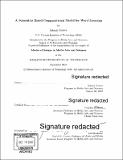| dc.contributor.advisor | Cynthia Breazeal. | en_US |
| dc.contributor.author | Grover, Ishaan | en_US |
| dc.contributor.other | Program in Media Arts and Sciences (Massachusetts Institute of Technology) | en_US |
| dc.date.accessioned | 2019-03-01T19:58:58Z | |
| dc.date.available | 2019-03-01T19:58:58Z | |
| dc.date.copyright | 2018 | en_US |
| dc.date.issued | 2018 | en_US |
| dc.identifier.uri | http://hdl.handle.net/1721.1/120694 | |
| dc.description | Thesis: S.M., Massachusetts Institute of Technology, School of Architecture and Planning, Program in Media Arts and Sciences, 2018. | en_US |
| dc.description | Cataloged from PDF version of thesis. | en_US |
| dc.description | Includes bibliographical references (pages 73-77). | en_US |
| dc.description.abstract | Studies have shown that children's early literacy skills can impact their ability to achieve academic success, attain higher education and secure employment later in life. However, lack of resources and limited access to educational content causes a "knowledge gap" between children that come from different socio-economic backgrounds. To solve this problem, there has been a recent surge in the development of Intelligent Tutoring Systems (ITS) to provide learning benefits to children. However, before providing new content, an ITS must assess a child's existing knowledge. Several studies have shown that children learn new words by forming semantic relationships with words they already know. Human tutors often implicitly use semantics to assess a tutee's word knowledge from partial and noisy data. In this thesis, I present a cognitively inspired model that uses word semantics (semantics-based model) to make inferences about a child's vocabulary from partial information about their existing vocabulary. Using data from a one-to-one learning intervention between a robotic tutor and 59 children, I show that the proposed semantics-based model outperforms (on average) models that do not use word semantics (semantics-free models). A subject level analysis of results reveals that different models perform well for different children, thus motivating the need to combine predictions. To this end, I present two methods to combine predictions from semantics-based and semantics-free models and show that these methods yield better predictions of a child's vocabulary knowledge. Finally, I present an application of the semantics-based model to evaluate if a learning intervention was successful in teaching children new words while enhancing their semantic understanding. More concretely, I show that a personalized word learning intervention with a robotic tutor is better suited to enhance children's vocabulary when compared to a non-personalized intervention. These results motivate the use of semantics-based models to assess children's knowledge and build ITS that maximize children's semantic understanding of words. | en_US |
| dc.description.sponsorship | "This research was supported by NSF IIP-1717362 and NSF IIS-1523118"--Page 10. | en_US |
| dc.description.statementofresponsibility | by Ishaan Grover. | en_US |
| dc.format.extent | 77 pages | en_US |
| dc.language.iso | eng | en_US |
| dc.publisher | Massachusetts Institute of Technology | en_US |
| dc.rights | MIT theses are protected by copyright. They may be viewed, downloaded, or printed from this source but further reproduction or distribution in any format is prohibited without written permission. | en_US |
| dc.rights.uri | http://dspace.mit.edu/handle/1721.1/7582 | en_US |
| dc.subject | Program in Media Arts and Sciences () | en_US |
| dc.title | A semantics based computational model for word learning | en_US |
| dc.type | Thesis | en_US |
| dc.description.degree | S.M. | en_US |
| dc.contributor.department | Program in Media Arts and Sciences (Massachusetts Institute of Technology) | en_US |
| dc.identifier.oclc | 1088722359 | en_US |
